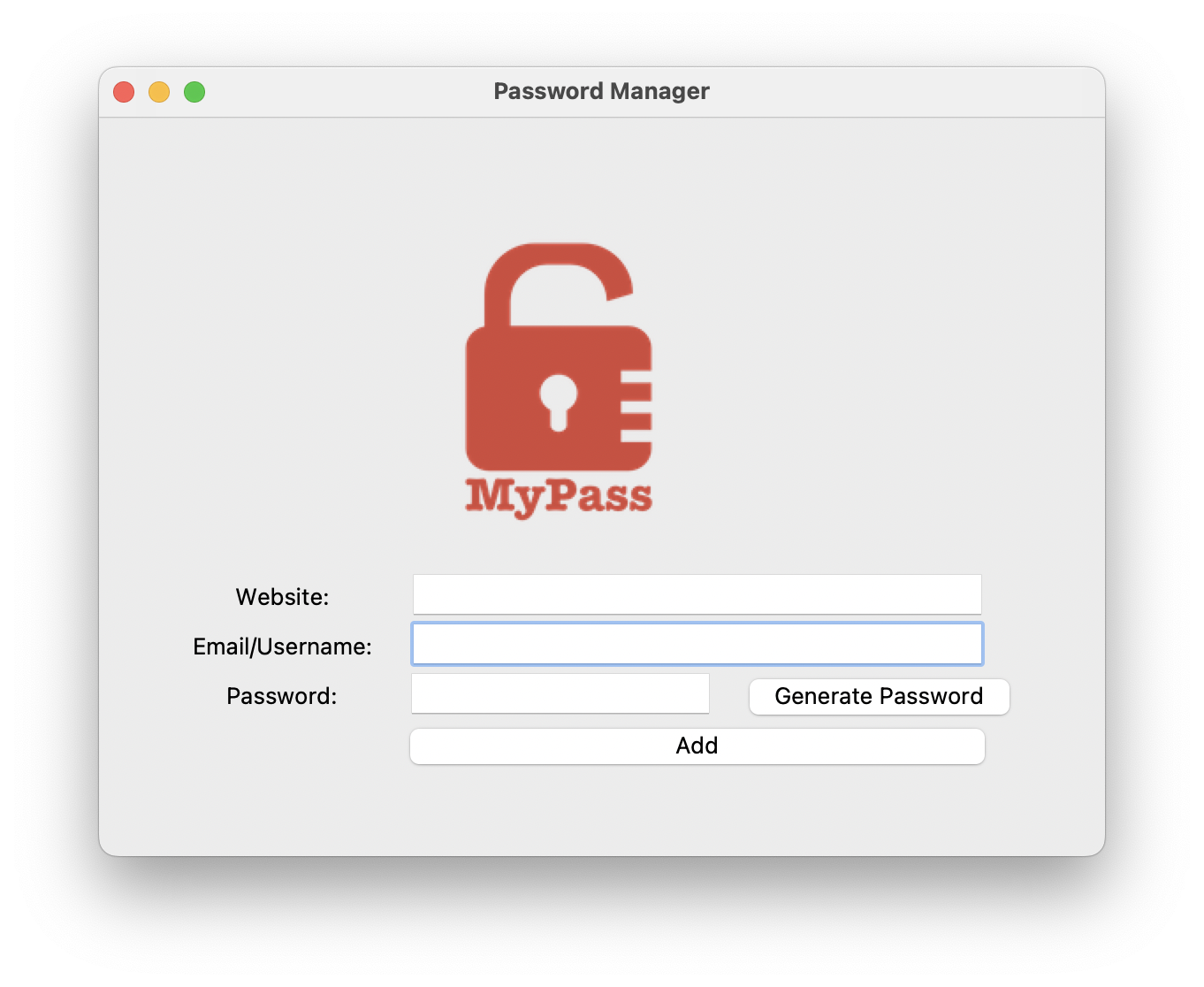Building a Password Manager: Securing Information with Python
I just wrapped up a project that I’ve been working on for the past week, which I’m calling my Password Manager. This project was an exciting way to deepen my understanding of Graphical User Interfaces (GUI), revisit some Python concepts like list comprehension and the .join() method, and explore a new tool called the pyperclip module. Here’s a summary of what I learned and how this project came together.
The Password Manager: A Secure Solution for Personal Use
The Password Manager project allowed me to create a user-friendly application that generates highly secure passwords for various accounts, such as websites, bank accounts, and any other application where security is essential. The project resulted in a beautiful user interface that makes it easy to generate, store, and manage passwords. With this tool, you can keep all your active passwords in one place, improving how you manage your information securely. Here is a screenshot of what it looks like:

Key Features of the Password Manager
1. Creating a GUI with Tkinter
This project was a great way to strengthen my knowledge of GUI design using the Tkinter module. I was able to create a user-friendly interface that allows users to:
- Generate random, secure passwords with a single click.
- Store these passwords in a file for future use.
- Copy passwords directly to the clipboard for easy pasting.
Tkinter’s flexibility made it possible to design an interface that is both intuitive and effective, giving users a nice experience while managing their passwords.
2. Using the .join() Method and List Comprehension
Throughout this project, I revisited some fundamental Python concepts that enhanced the functionality of the Password Manager:
- List Comprehension: It allowed me to create the password generation logic, combining random letters, numbers, and symbols to generate strong passwords.
.join()Method: This method played a crucial role in converting lists of random characters into a string, creating the final password that users can copy and use immediately.
Here’s an example of how these concepts were applied in the password generation process:
For loop original approach.

List Comprehension approach. Simpler and more reliable code.

Random characters in a list transformed into a string using .join() method.

3. Automating Copy-Paste with the pyperclip Module
One of the biggest advantages of this project was learning how to use the pyperclip module. This module allows for seamless interaction with the clipboard, making it easier to copy passwords and paste them wherever they are needed. Now, when users press the button to generate a password, the application automatically copies the new password to the clipboard.
This feature is particularly helpful because it minimizes the chance of errors when copying passwords manually. Instead, you can simply generate the password, and with a Ctrl+V or Cmd+V, it’s ready to be pasted into the desired field.

This code snippet shows how the pyperclip module can make the process of using generated passwords even smoother and more efficient.
Key Takeaways from the Password Manager Project
- GUI Design Skills: The Password Manager reinforced my ability to design user-friendly interfaces with Tkinter, making it easy to create practical applications that are both visually appealing and functional.
- Mastering the Clipboard: The pyperclip module was a game-changer for this project. It allowed me to automate the process of copying generated passwords, reducing errors and making the password management process even more user-friendly.
- Strengthening Core Python Skills: Revisiting concepts like list comprehension and the
.join()method helped me build more concise and efficient code. These concepts are crucial for Python development, and it’s always great to see how they can be applied in different projects. - Building Tools for Personal Use: The most satisfying part of this project was creating something for myself. It’s incredibly rewarding to have a tool that not only boosts my productivity but also enhances my daily security practices.
Final Thoughts
I really enjoyed the time I spent building this Password Manager. It allowed me to deepen my knowledge of Python, explore new modules, and create a tool that I can continue to customize for my needs. I’m excited to keep learning more about coding and look forward to building more practical applications for personal use and sharing them with others.


Leave a Reply